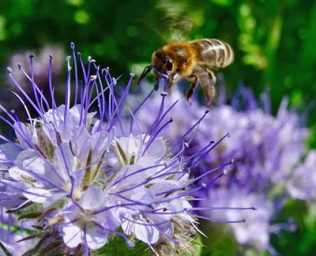Weedcontrol without using Weedkillers!


So, you’ve finally got to the top of the allotment waiting list and been given your long dreamed of plot. You arrive seeds in hand raring to go, but the whole place is covered in weeds.
Is your first thought to reach for the Round Up? STOP!! There is another way – the organic way.
Inheriting a plot that has been neglected and allowed to become covered with annual and perennial weeds can be very disheartening, as can the similarly disappointing, but self-inflicted situation of missing a few weeks up the plot for one reason or another and returning to semi-jungle conditions. We’ve all been there, and the temptation can be to ignore it, eventually leading to us giving up the plot.
However, with a little bit of hard work initially, an organic approach can help you maintain a mostly weed-free plot without using any man-made chemicals.
The time of year dictates how much initial work you will have to put in. Late winter or early spring is good time to make a start, as annual weeds will have died back over winter and root systems of more pernicious weeds will be dormant or weaker.
The first step is unavoidable manual work. Clear the worst of tall growth with shears, loppers and billhooks. Or, if you are able to borrow a strimmer, this can really help make a swift job of it. In fact, an electric strimmer may be a worthwhile investment, particularly if you are planning on keeping grass paths or a lawn area on the plot. This is also a good time to decide on a plan of where you want your vegetable beds to be, adding broad paths between them plus a wild area where you can let the weeds run riot to provide much needed habitats for beneficial wildlife.
It is worth digging out any obvious perennial weed issues (such as bramble). Every piece of weed root removed at this stage will be one less future weeding job. If you feel tempted to let machinery take the strain and rotavate the plot, a word of advice, this will simply chop up any perennial weed roots into smaller pieces and distribute them throughout the soil, meaning a healthy crop of weeds next year!
Mulch
You then need to cover the soil (mulch). This effectively shades out weeds, protects the soil and the microorganisms from excessive sun and rain and provides a microclimate for those organisms to break down the mulch so you have a perfect planting environment for your seedlings later on. There are multiple materials for achieving this, and you may want to do some research on what works best for you. The topic of mulching is an immense one and would need its own article, however there are some excellent sites out there including those promoting other gardening principles that are synergistic with organic growing such as ‘no dig’ systems and permaculture.
Ones to visit include:
My favourite method is to apply a mulch of compost or manure and then cover with large pieces of cardboard weighted down with wood or stones. I tend to peel back any remaining cardboard before planting, but it is entirely possible to plant through any mulch, layering up in a compost and cardboard ‘sandwich’ and continuing to benefit from the weeds being shaded out.
Once you have removed the worst offenders and covered the plot, you shouldn’t have to do too much to maintain it. You can continue to cover empty beds with a mulch, or perhaps more usefully use them to grow overwintering crops (such as brassicas, leeks, autumn sown onions, autumn sown broad beans) or to try out the dizzying range of green manures. These plants add nitrogen to the soil either by fixing it with their roots (leguminous plants) or by being incorporated into the soil by hoeing in.
Again, look online for what suits your soil’s needs the best: https://www.gardenorganic.org.uk/green-manures
Evidence shows that it is much more healthy for the soil and its trillions of microorganisms to have plants growing in it. And this is true even if the plants happen to be weeds to us. The next best thing is to cover the soil with a mulch rather than leaving the soil bare. Supporting your soil is at the heart of organic gardening.
Below there is a link to a quick view guide to organic methods of weed control
Jenni Cresswell
BHOGG
https://bhorganicgardeninggroup.org/





No Comments
Add a comment about this page